How to Winterize A Pool
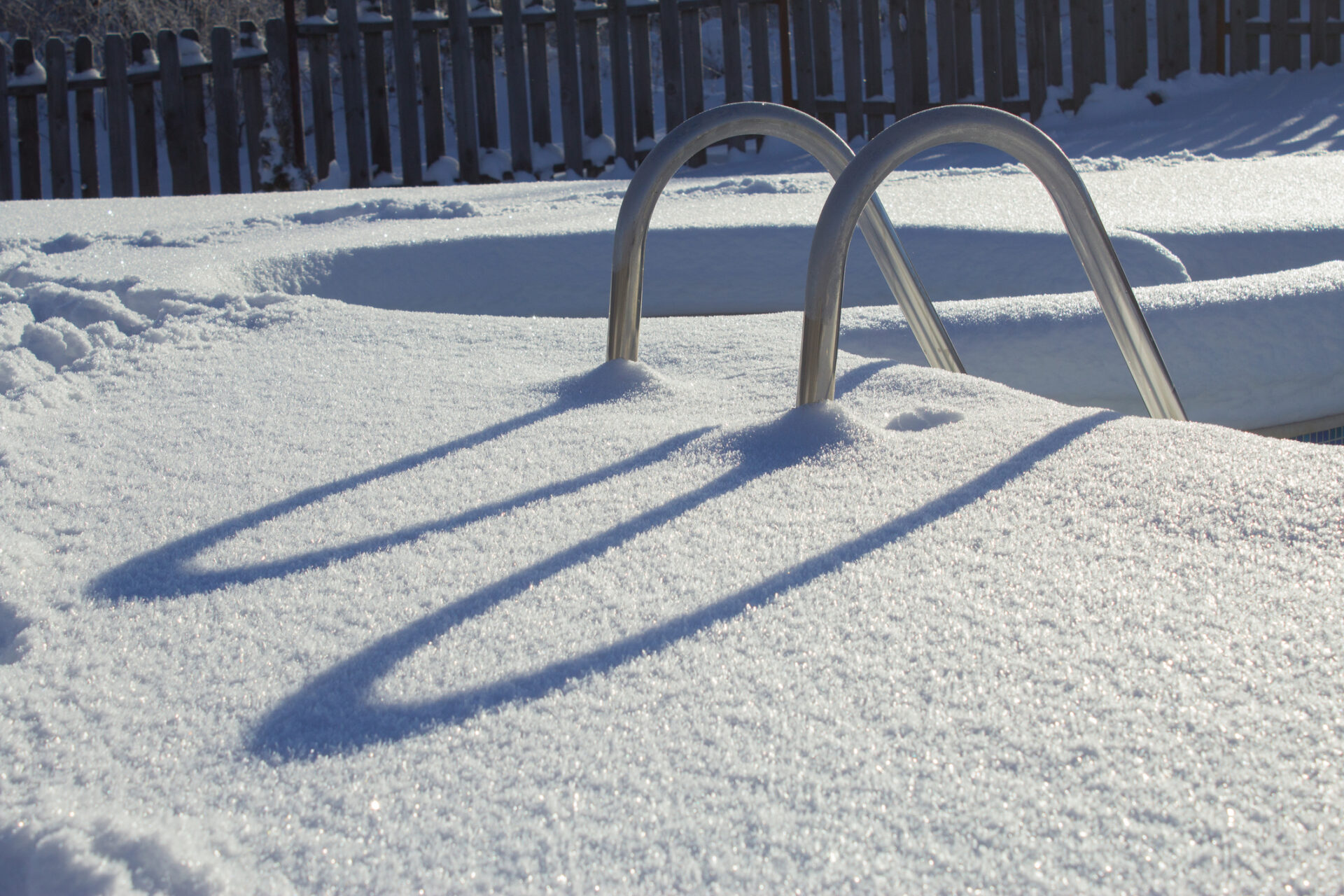
You’ve closed the umbrellas, tucked away the loungers, maybe even traded sandals for snow boots. But if your pool is still open, you’re not off the hook yet. Collingwood winters don’t ease in gently. They hit hard, fast, and unforgiving. If your pool isn’t properly shut down for the season, the snow and ice won’t just skim the surface. They’ll creep into pipes, push into fittings, and quietly wreck the system you spent all summer enjoying.
It’s frustrating to think that something built for fun can so easily turn into a financial headache. Winterizing your pool is all about strategy, so you don’t have to stress come spring. This guide is your roadmap, written by local professional pool builders who’ve seen firsthand what happens when pools aren’t properly shut down for winter. If you’re closing it yourself or researching pool contractors near you for next season, here’s how to do it right.
The Importance of Pool Winterization
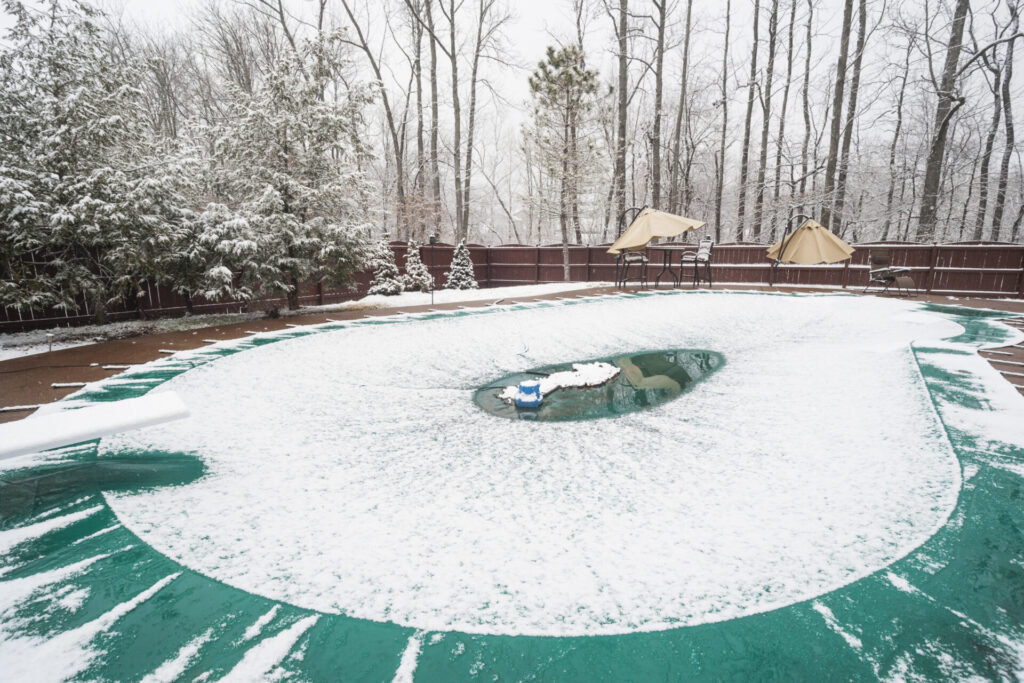
Collingwood winters bring a freeze-thaw cycle that’s hard on everything, including swimming pool systems. Without proper winterization, water left in your pipes, pump, or filtration system can freeze, expand, and crack key components. That damage isn’t just inconvenient—it’s expensive, and often avoidable.
And it’s not just the plumbing. Without the right chemical prep, your water can turn green under the cover, leave mineral stains, or eat away at the pool’s surface. Winterizing your pool helps avoid premature liner wear, keeps your pool equipment in good condition, and prevents you from spending the first few weeks of spring repairing things that didn’t survive the cold.
When to Winterize Your Pool in Collingwood
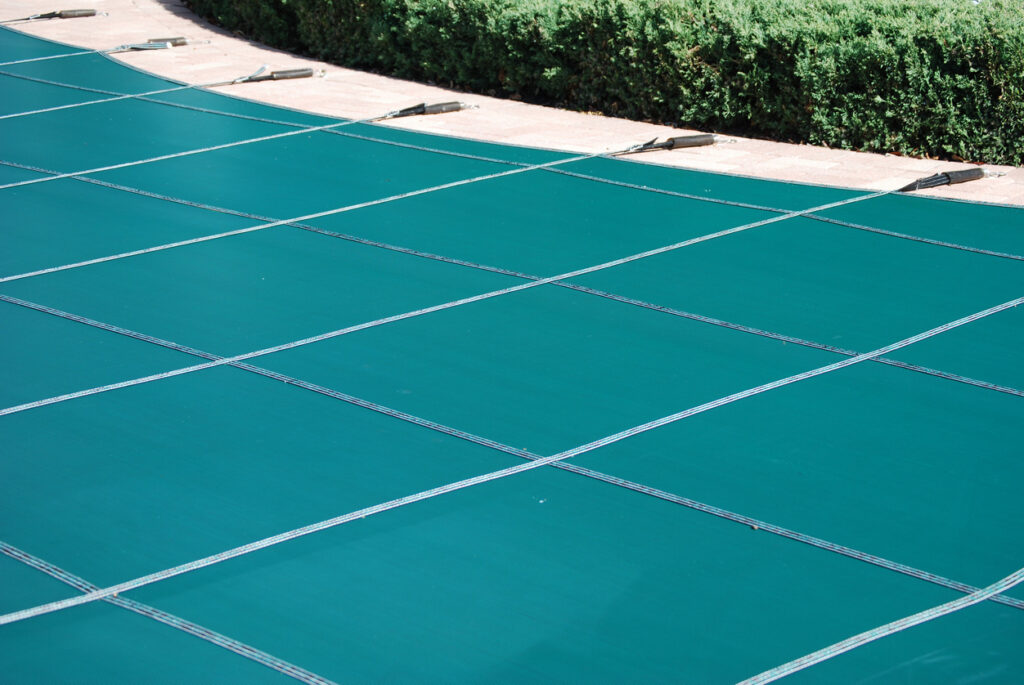
If you’re in Collingwood or the surrounding Georgian Bay area, the sweet spot for winterizing is when water temperatures drop below 15°C but before the first deep frost. That usually falls somewhere between late September and mid-October, depending on the season. Too early, and the water might still be warm enough for algae to grow. Too late, and you risk freezing lines or equipment damage.
Waiting until it “feels cold enough” can backfire, especially if an early frost sneaks in. Watch your pool’s water temperature, not just the air forecast. That’s what determines your true window for a safe and effective closing.
A Step-By-Step Breakdown on Closing Your Pool
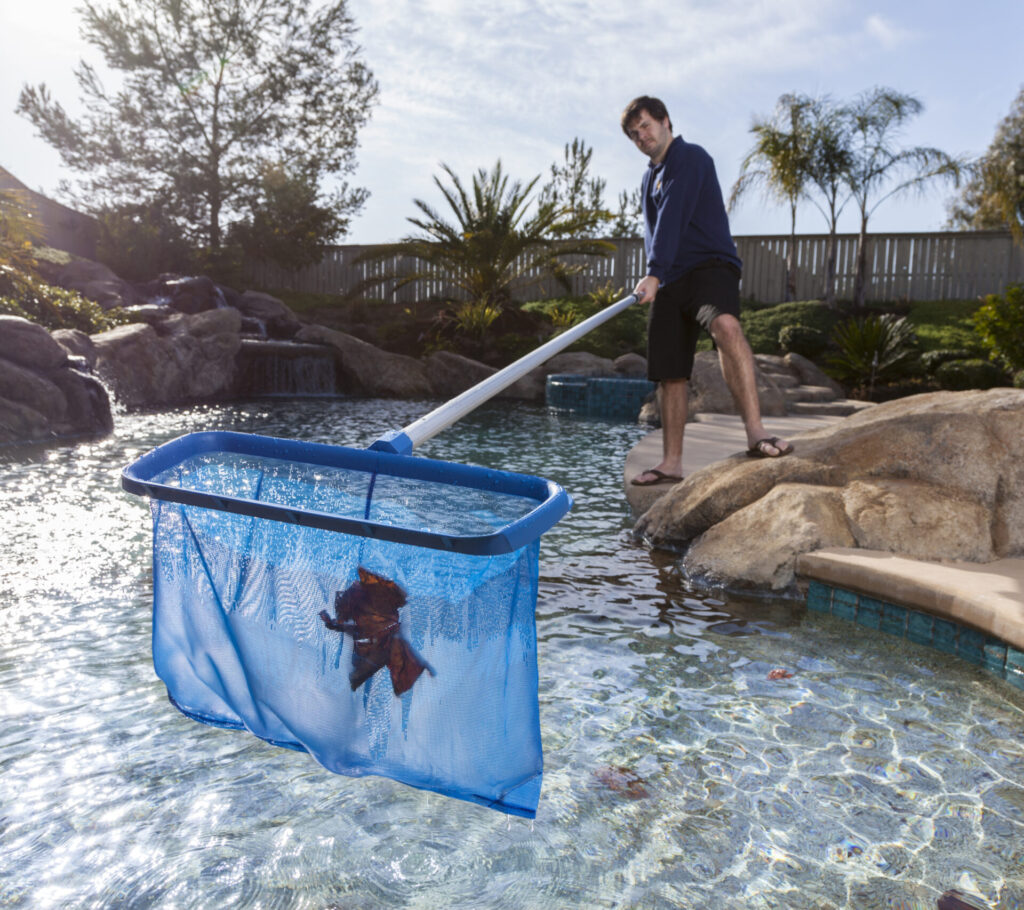
A proper winter shutdown takes the same level of planning and precision as the pool maintenance steps that keep your system running all season. Each action matters, especially when the goal is long-term protection. Taking the time to do it properly can make all the difference when the weather turns.
Step 1: Start with a deep clean. Skim off the leaves, scrub the walls, vacuum everything. Any grime left in your pool settles in for winter and shows up again in the spring, only worse. Leftover dirt and debris can stain your liner or affect water balance if left behind.
Step 2: Once your pool is clean, test your water chemistry. Balance your pH, total alkalinity, and calcium hardness. Balanced water helps protect the interior finish and keeps scale or corrosion in check until spring.
Step 3: Next, lower the water level. For standard inground pool installations, that means just below the skimmer and return jets. If your pool has a vinyl liner or fiberglass shell, ask your pool builder if they recommend a different level to protect the structure. If your water is too high, freezing temperatures can cause the water to freeze and expand, creating pressure against the plastic or concrete components of your pool. If there’s no space for that ice to expand safely, it can:
- Crack the skimmer (because it’s filled with water that freezes)
- Push ice into plumbing lines, causing them to split
- Damage the tile or coping by forcing movement or lifting materials
Step 4: The most important part, clearing and plugging your pool lines. Pool contractors use air compressors to blow water out of your pump, heater, filter and plumbing lines. Skipping this step risks a burst pipe or damaged fittings when frozen. Once the lines are dry, they should be plugged and sealed off for the season.
Step 5: Next is treating your pool with winter chemicals. Add a chlorine-free shock to oxidize contaminants, a quality algaecide to stop growth cold, and a scale inhibitor to prevent mineral buildup. All of which help to keep the water clean and stable while your pool is closed.
Step 6: Then, cover it up. A tightly fitted mesh or solid safety cover keeps out debris, deters animals, retains the chemical balance and holds everything in place through snow, wind and freeze. If it’s loose or sagging, you’re inviting trouble. Be sure to secure it like you mean it.
The Real Cost of Skipping Steps
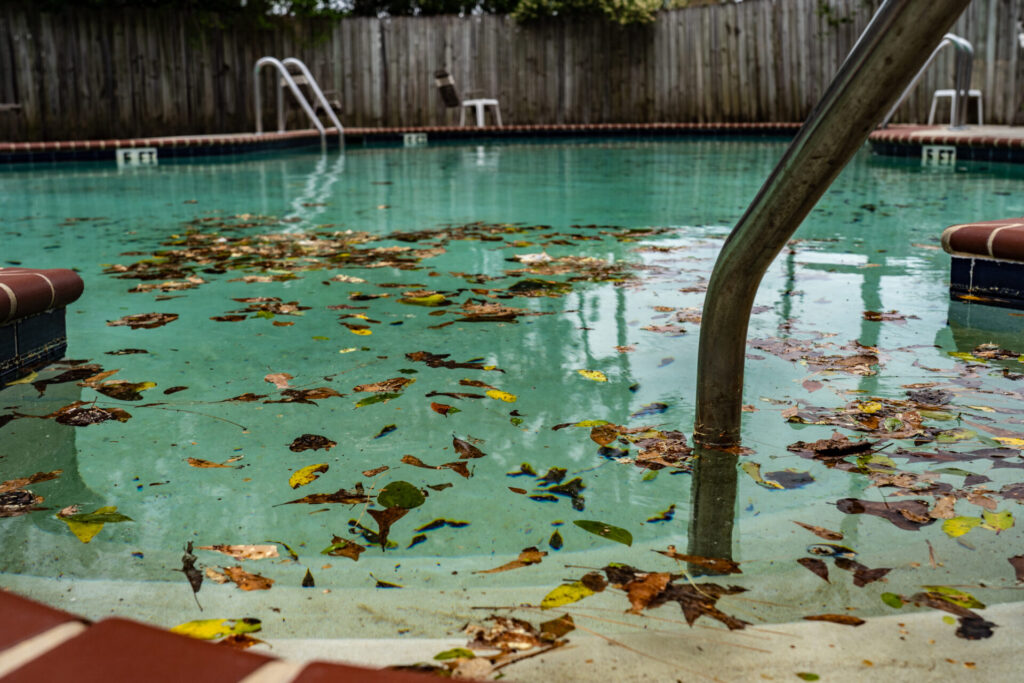
If winterization sounds like a lot of steps, that’s because it is. But they all matter. Forget to lower the water and your skimmer could crack. If you skip the chemical balance, you’ll be dealing with murky water and stains come opening day. Miss the line blowout, and you can expect spring repair bills and delays in being able to swim in your pool for summer.
Even something small (like not securing your cover properly) can leave your pool exposed to weather damage, pests, or collapsing under snow load. In a place like Collingwood, where conditions can change fast, there’s not much room for error.
What to Do With Pool Equipment in the Winter
Your pump, filter, and heater need the same protection as the pool itself. Once the plumbing is cleared, drain all equipment and make sure nothing’s holding residual water. It’s a good idea to cover your exposed equipment or put any removable parts away in a shed or garage.
Smart pool systems should also be powered down and disconnected where needed. If you have automation or digital control panels, be sure to check the manufacturer’s recommendations on proper winter pool care. This is an easy step that can save you from having to replace expensive equipment next year.
Remember that all exposed gear should be covered, preferably with breathable material, not plastic tarps that trap condensation. Moisture is the enemy. Don’t give it a place to hide.
Should You Hire a Professional?
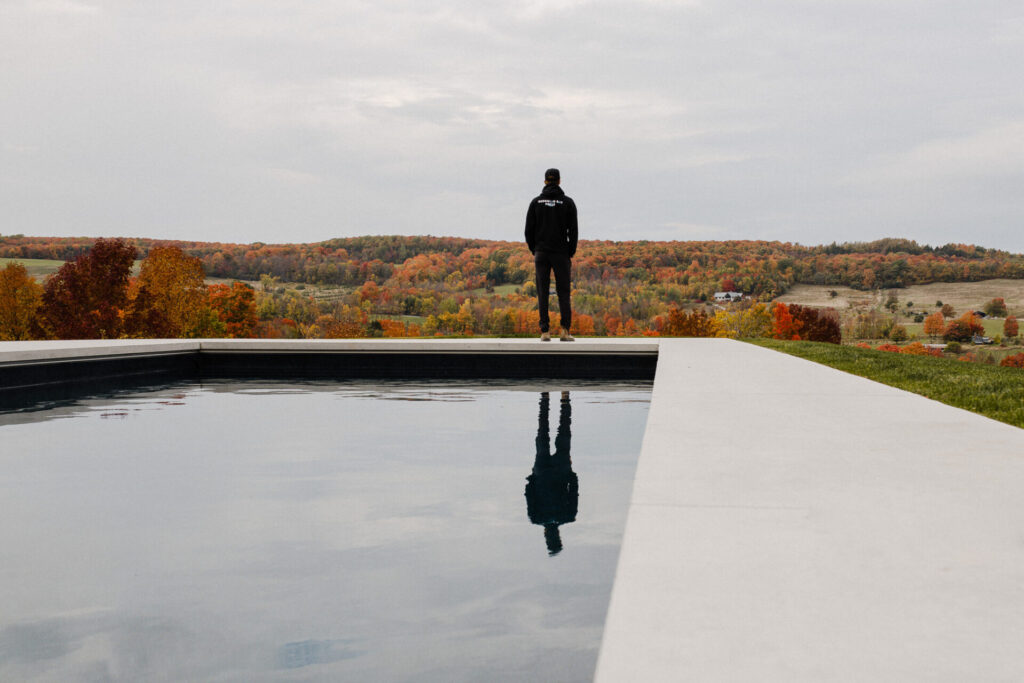
DIY winterizing is doable, but there’s no shame in calling in the pros, especially if you have a larger property, custom systems, or if you’re behind and are closing late in the season. Professional pool builders and pool service teams bring years of hands-on experience, the proper equipment and an eye for things even the most seasoned pool owners can miss.
They’ll make sure everything’s blown out correctly, your water chemistry is optimal, and that your cover is installed properly. It’s one of those times when outsourcing can make all the difference. Especially in regions like Georgian Bay, where the winter shows us no mercy, that kind of expertise really pays off.
Professional pool builders who work in regions like Georgian Bay know first-hand the consequences of poor winter preparation. When working with a local pool closing & maintenance provider, make sure they understand the structural details of your pool, the materials involved and the demands of the environment. A pool built to last still depends on smart seasonal care.
Don’t Walk Away After Closing Day
Once your pool is shut down, you’re not entirely off duty. I’s a good idea to check on your pool systems and any outside equipment occasionally. Clear snow and debris off of the cover, keep an eye on your water levels, and make sure the safety cover remains tight and undamaged. Mid-winter inspections can catch small issues before they become serious spring headaches.
Come opening season, a well-maintained system means a smoother start and more time enjoying the water.
At Georgian Bay Pools, we build with all seasons in mind. From materials to maintenance, we make sure your pool is built to last—and that you know how to care for it. Because when you work with us, you’re not just hiring a builder, you’re working with a neighbour. Let us build you a pool that’s ready for every season, like good neighbours should.
